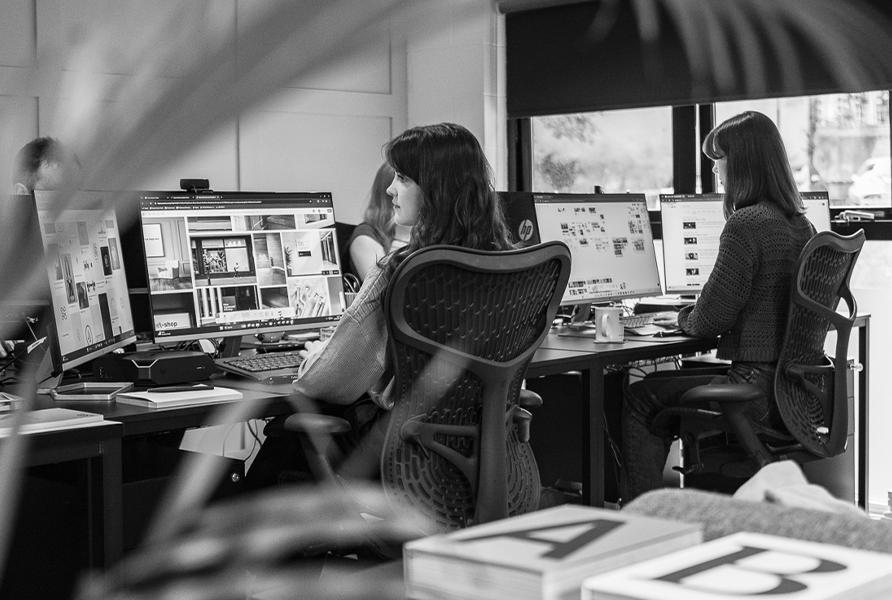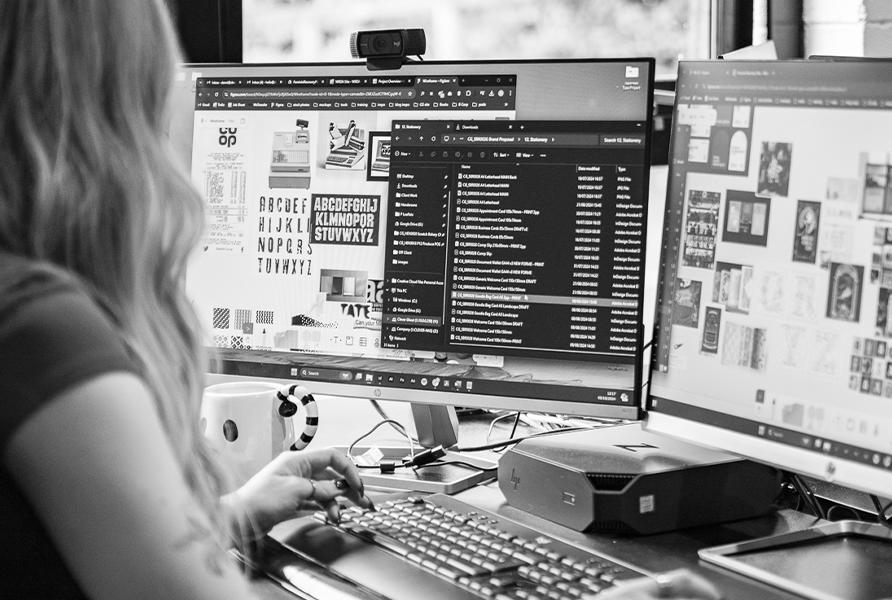
Are you graduating soon but don’t know where to start with your design portfolio? We’ve all been there, so here are our tips for creating a solid showcase of your work that will help you land that junior designer role.
Quality over quantity
Firstly, be ruthless with what you include. Your portfolio should be a curated showcase of your best work, so select only your strongest pieces. A less impressive project from your first year in university could reduce the overall quality of your portfolio.
Employers looking to hire a Junior Designer will understand that most graduates do not have a huge swathe of work under their belt. If you feel your portfolio needs more high-quality work, don’t be afraid to start a personal project as a portfolio piece. Remember it’s about quality, not quantity.
Showcase your skills
If you do have a large number of projects for inclusion, try to keep it to one project per discipline to showcase your different skills, i.e. one animation project, one packaging project… etc. This won’t apply if you’re looking to specialise straight away, such as pursuing a career in motion design. In this case, definitely curate your portfolio to include projects that are relevant to the job you want.
Proofread... and then proofread again!
There’s nothing more off-putting in a CV or portfolio than grammar or spelling mistakes – not every creative has excellent skills in this area, but a word processor or a friend can check this for you. Failing to proofread and missing spelling mistakes shows a lack of care and attention to detail.
Show your process
As creatives, we’re interested in the journey to the end result. We want to see your ideas and thought processes that show how you arrived at your final design. Whether this is a short explanation of your concept or a mood board of ideas, it’s always helpful to know what we’re looking at and how you got there. Focus on the creative reasoning behind design choices, rather than simply describing what's in front of you. When you land an interview, bring your notes/sketchbook - we love to see the behind-the-scenes of a project.
Be transparent
If you include a group project in your portfolio, be clear about which parts you contributed to. As a junior designer, being able to work as part of a team is a valuable skill for employers, so be honest. Employers will see through you claiming that the group project was a solo project, especially if they receive applications from other contributors to the group project (eek!).
Less is more
It might be tempting to try to make your portfolio stand out from the crowd by adding design elements and an overly complex website, but don’t do this! Your portfolio doesn’t need bells and whistles – let the work speak for itself. Employers are busy people, so you should make it as easy for us to view your work as possible.
Ask for feedback
Keep an eye out for any portfolio review opportunities – Creative Lives in Progress do this regularly over zoom for different specialities within the creative industry. If you don’t come across any opportunities, why not be proactive and send your portfolio to some local studios for feedback – the worst they can say is no!
On that note, feel free to send your portfolio our way and we will do our best to get back to you when we can with some feedback and answer any questions you may have.
Good luck, we can’t wait to see your work!




